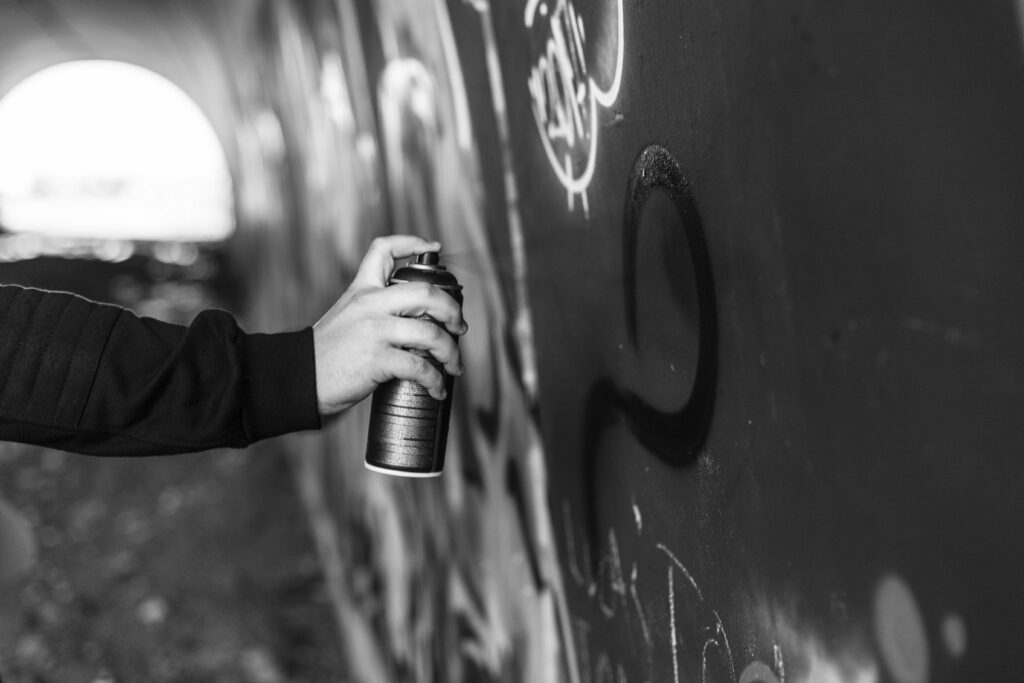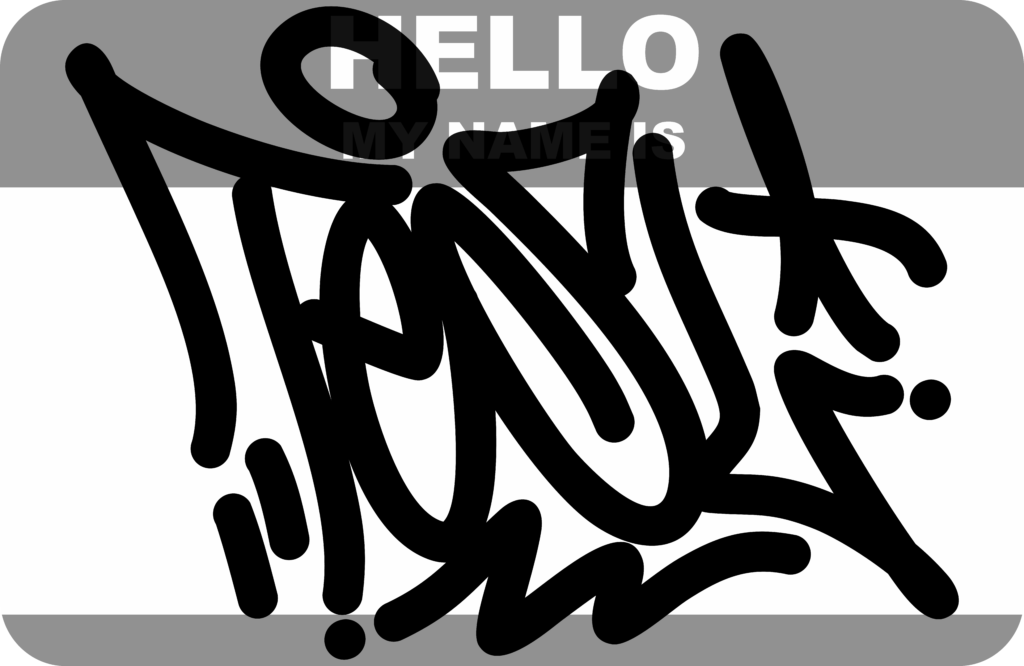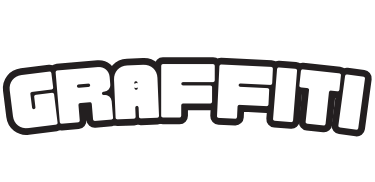As an aspiring graffiti artist, having the right supplies is crucial to creating stunning, impactful street art. From markers to spray paint, each tool plays a vital role in helping you develop your unique style and express your creativity. In this comprehensive guide, we’ll explore the essential graffiti supplies every beginner should have in their arsenal.
Table of Contents
1. Spray Paint
Spray paint is the quintessential tool in graffiti supplies, allowing artists to swiftly create large-scale, colorful pieces. When selecting spray paint for your graffiti projects, consider the following factors:
- Brand: Opt for high-quality, graffiti-specific spray paint brands known for their vibrant colors, fast-drying formulas, and excellent coverage. Some popular brands include Montana, Ironlak, and MTN.
- Color selection: Build a diverse color palette that includes primary colors, shades, tints, and unique hues to help your artwork stand out.
- Pressure and nozzles: Experiment with different can pressures and nozzle sizes to achieve various line widths, effects, and textures in your pieces. Learn more about mastering spray paint techniques to elevate your graffiti skills.

Spray paint is available in different types, including low-pressure, high-pressure, enamel, and acrylic. It’s the go-to medium for creating large-scale pieces on walls, trains, and other surfaces. Here’s the exact Montana graffiti spray-paint set I use every day—fast-drying, high-coverage colors that pop on any wall. Check it out on Amazon now to see today’s price and reviews and get your cans shipped to your door.
2. Spray Caps
Caps and nozzles are attachments that fit on the top of spray cans and control the flow and pattern of the spray paint. They are essential for graffiti artists, as they allow them to create different visual effects and styles with the same can of paint. It categorizes the caps into three main types:
- Skinny Caps: Ideal for detailed work, precision lines, and fine tuning, skinny caps are fitted with a small dot or narrow opening to produce thin, precise lines.
- Fat Caps: Used for broad strokes, covering large areas, and creating bold lines or drips, fat caps feature a wider hole that enables the New York Fat Cap and Rusto Fat Cap.
- Calligraphy/Specialty Caps: Designed for various effects, pattern outlines, and details, these specialty caps include the Calligraphy/Astro Fat Cap, Transversal/Banana Cap, NY Thin, and more.

Need cleaner lines and faster fills? This universal graffiti spray-cap kit is the same one I click onto my Montana cans for razor-sharp outlines and buttery fat strokes. See the full cap pack on Amazon, compare sizes, and grab yours today :
3. Markers
Markers are another popular tagging tool that can be used for outlining, highlighting, or filling in small areas. They come in various sizes, shapes, colors, and ink types. Some markers are permanent, while others are water-based or alcohol-based.

Markers can be further categorized into three main types:
- Permanent markers: Also known as « streaks, » these markers are essential for sketching and drawing graffiti, adding in creating outlines, adding shading, and adding highlights. They are available in a variety of tip shapes and sizes for precise lines and smooth coloring.
- Paint markers: These homemade tagging tools consist of a squeezable bottle filled with ink or paint and a nib made of felt, cotton, or another absorbent material. Paint markers are cheap and easy to make, but they can be messy and leaky.
- Mops: Mops are large markers or squeezable bottles that can be filled with ink and used for bombing or tagging large surfaces or simple letters or symbols.«
Looking for a reliable, all-surface paint marker that won’t streak or fade? Grab the Posca 8-color medium-tip set—rich pigments, smooth flow, and tips tough enough for metal, glass, or canvas. Check today’s price on Amazon and add it to your kit here to start tagging in vibrant, opaque color:
4. Sketch Tools
To create a graffiti sketch, selecting and utilizing the right tools is crucial as they enable you to convey your artistic vision and style effectively. Various tools are available for sketching and drawing graffiti, such as:
- Pencils: These fundamental tools are essential for sketching and drawing graffiti, aiding in creating outlines, adding shading, and defining line thickness to demonstrate light and shadow. Pencils are great for building up details in a gradual, refined manner.
- Rulers: This tool is invaluable for measuring, aligning, or drawing straight lines and angles. In graffiti sketching, rulers help in forming geometric shapes, patterns, or perspectives. They are also useful for dividing the space or layout of a sketch.
- Erasers: An eraser is instrumental in rectifying mistakes or eliminating undesired marks from the surface.
5. Paint Markers
Paint markers contain acrylic or oil-based paint instead of ink, producing opaque and vibrant colors that can adhere to various surfaces, including wood, metal, glass, and plastic. Paint markers are versatile, suited for filling large areas, creating solid outlines, or adding highlights. They come in different sizes, shapes, and tips, including chisel, bullet, or brush, and can be either permanent or removable, depending on the paint type.

Grab the Posca 16-color paint-marker bundle I’m using now—same fade-proof acrylic paint as the set above, but with twice the colors for smoother blends and richer highlights. See it on Amazon here.
6. Tape
Tape is another handy tool used to attach, mask, or cover sections of a surface. It assists in forming sharp edges, outlines, or borders within a graffiti sketch, and protects the surface or adjacent areas from unwanted paint or ink.

7. Alcohol Markers
Alcohol markers for felt-tip pens contain alcohol-based ink, allowing for easy blending and mixing. They can replicate the effects of spray cans, producing smooth gradients, fades, and blends. Ideal for coloring in smaller sections, creating shadows, or adding depth, alcohol markers are available in a broad range of colors and shades. Some even feature dual tips of varying sizes or shapes, allowing for a variety of fine to thick lines.

Need a solid set of alcohol markers for your artwork? I’m using this 80-color dual-tip alcohol marker pack—smooth ink, easy blending, and enough shades for clean fades and deep shadows. Check it out on Amazon here and see today’s price.
8. Tagging Tools
Tagging tools for graffiti are instruments that graffiti artists use to create their artworks on various surfaces. Learn about how to draw graffiti tags here!


These advantages and styles of tagging tools and their own advantages and disadvantages:
- Spray cans: These are the most widely used and versatile tagging tools. They can produce thin or thick lines depending on the nozzle, pressure, distance, and angle of spraying. Spray cans can cover large surfaces quickly and create smooth gradients, fades, and blends. However, they are also noisy, expensive, and illegal to use without permission.

- Stickers: These are pre-made labels or decals that can be stuck to any surface. Stickers can be printed, drawn, or written on with various materials. They are quick and discreet method of tagging, as they can be applied in seconds without making noise or leaving traces. However, stickers can also be customized and traded with other graffiti artists, allowing you to spread your tag widely.

- Stencils: These are cut-out templates that can be used to spray or paint a design repeatedly on different surfaces. Stencils can be made from cardboard, plastic, metal, or paper. They allow for the creation of complex and detailed images with minimal effort and time. Stencils can also be layered or combined to create variations and contrasts. However, they can also be bulky, fragile, or become clogged by paint.
9. Mops
Mops are homemade tagging tools that consist of a squeezable bottle filled with ink or paint and a nib made of felt, cotton, or sponge. Mops can create thick and drippy lines that are hard to remove. Mops are cheap and easy to make, but they can also be messy and leaky. Mops can be used for bombing or tagging large surfaces with simple letters or symbols.

For a hassle-free option, I carry a BIGTHUMB pre-filled graffiti mop—water-based, drip-resistant, and fitted with a chunky nib that pumps out bold, juicy lines without the usual leaks. See the one I use on Amazon here and keep your bombing kit ready to go :
10. Reference Graffiti Books
Reference graffiti books are an essential resource for aspiring graffiti artists. They provide inspiration, techniques, and insights into the history and culture of graffiti. These books showcase the works of renowned graffiti artists from around the world, covering various styles, eras, and regions. By studying these books, beginners can learn about the fundamentals of lettering, composition, and color schemes, as well as discover new ideas and approaches to incorporate into their own pieces.
Some popular graffiti reference books include :
- « Subway Art » by Martha Cooper and Henry Chalfant,
- « Graffiti World: Street Art from Five Continents » by Nicholas Ganz,
- « The History of American Graffiti » by Roger Gastman and Caleb Neelon.
- « Graffiti Lettering Workbook For Beginners » by Minelli Press.

Building a collection of graffiti reference books is a valuable investment for any aspiring street artist looking to expand their knowledge and skills. You can get this one I use from this link here :
Conclusion
By equipping yourself with these essential graffiti supplies, you’ll have the tools necessary to create impressive, dynamic street art that showcases your unique style and creativity. Remember to always prioritize safety, respect public and private property, and follow the laws and guidelines surrounding graffiti in your area.
For more information on developing your graffiti skills and techniques, check out our other articles:

